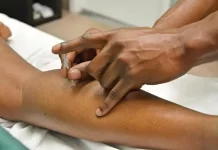Involuntary leakage of urine, commonly known as incontinence, can affect anyone but is more prevalent among older adults and women. Contrary to some beliefs, urinary incontinence is not a normal part of aging and can either be short-term or long-term, but it’s usually treatable.
What is Urinary Incontinence?
The urinary system, housed in the lower abdomen, includes the bladder, kidneys, and urethra. Normally, as the bladder fills up, its surrounding muscles contract to push urine into the urethra, whose muscles then relax to let the urine out. However, when bladder muscles fail to work efficiently, unintentional urine leakage can occur.
Causes of Urinary Incontinence
Various factors like urinary tract infections, genital infections, or certain medications may temporarily induce urinary leakage. Long-term incontinence could result from:
- Weakened pelvic floor muscles
- Overactive bladder muscles
- Nerve damage due to conditions like diabetes or Parkinson’s disease
- Pelvic organ displacement
- Prostate inflammation or enlargement
Types of Urinary Incontinence and Their Causes
- Overactive Bladder: This occurs when you feel a sudden, uncontrollable urge to urinate and can’t make it to the bathroom in time. This is often seen in people with Alzheimer’s, Diabetes, or Parkinson’s disease.
- Stress Incontinence: This is characterized by unintentional urine leakage when pressure is exerted on the lower abdomen like during sneezing, bending, or lifting.
- Overflow Incontinence: In this case, you’re unable to completely empty your bladder, causing dribbling. It’s most common in men with an inflamed prostate, those with spinal cord injuries, or people with diabetes.
- Functional Incontinence: In people with illnesses like arthritis that impact mobility and cognition, reaching the toilet in time may be challenging despite having a healthy bladder.
Treatment Options
Depending on the cause, urinary incontinence can be treated with:
- Medications like Tamsulosin and Mirabegron for overactive bladders
- Estrogen creams to fortify weak bladder and urethra muscles
- Pessaries to elevate the bladder
- Injectable bulking materials around the urethra
- Botox injections to relax bladder tissues
Surgical options may include correcting pelvic organ displacement, supporting the bladder neck, and creating slings to bolster pelvic floor muscles.
Top Products for Managing Urinary Incontinence
Managing urinary incontinence might not always require surgical interventions. Here are some helpful products:
- Tranquility Adult Diapers: These diapers offer all-night protection with their high waist design, soft material, and snug leg guards. A wetness indicator informs when it’s time for a change.
- Attends Adult Diapers: Made of premium materials, they offer excellent dry protection. The Dry Lock Containment turns moisture into gel, and the diapers are odor-resistant for 8 hours.
- Because Premium Maximum Plus Underwear for Women: Designed for women, these can be worn day and night. They feature breathable fabric and are slim enough to wear under fitted clothes.
- TENA Overnight Super Protective Underwear: Designed for a good night’s sleep, these are made from soft, breathable materials, featuring a snug fit and a wide back for added leakage protection.
- Depend Male Guards Maximum: These pads offer protection against heavy incontinence and can be worn in underwear or shorts. They are also odor-resistant, allowing you to go about your daily activities without concern.
Although urinary incontinence can be distressing and sometimes embarrassing, a range of effective management products are available to help you lead a normal life.



























